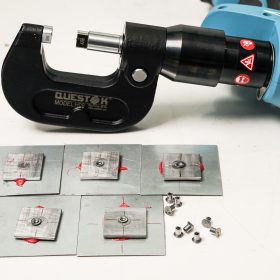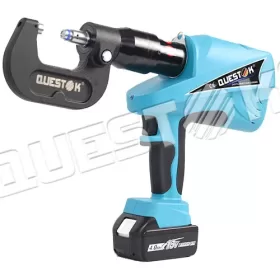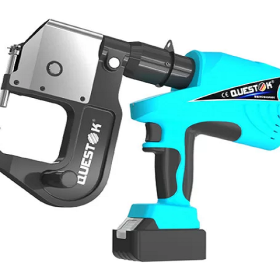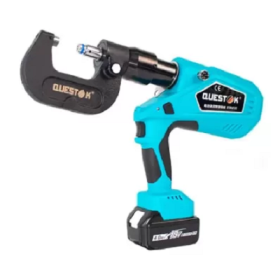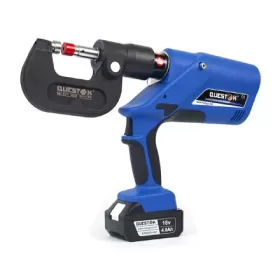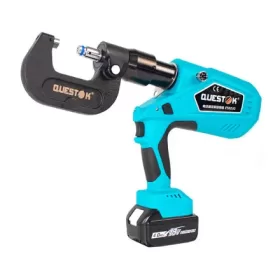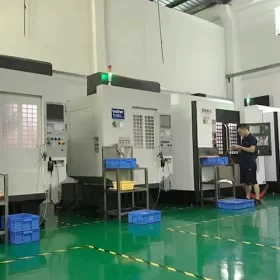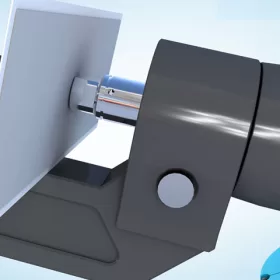Choosing the Best Size and Diameter for Industrial Solid Rivets
In the realm of industrial construction, where the integrity of structures hinges on the strength and precision of every component, the selection of the optimal rivet is a critical factor. Industrial solid rivets, the unsung heroes of countless assemblies, play a pivotal role in ensuring the durability and reliability of vital infrastructure. Understanding the intricacies of rivet size and diameter is paramount for optimal performance.
The diameter of a rivet refers to its thickness, measured either in inches or millimeters. Its significance lies in its direct correlation with the rivet’s shear strength, the force it can withstand before failing. A larger diameter typically denotes a stronger rivet, capable of accommodating higher loads. However, the application’s specific requirements should drive the diameter selection, ensuring that the rivet’s strength aligns with the expected forces it will encounter.
The length of a rivet is another crucial consideration. It must be long enough to penetrate the materials being joined by an adequate amount, typically around 1.5 to 2 times the combined thickness of the materials. Insufficient length may result in incomplete fastening, compromising the joint’s integrity. Conversely, excessive length can lead to protruding rivet tails, presenting a hazard and requiring additional finishing.
The material composition of the rivet is also a critical factor to consider. Different materials offer varying degrees of strength, corrosion resistance, and electrical conductivity. Steel rivets are widely used for their strength and durability, while aluminum rivets excel in lightweight applications and offer corrosion resistance. Choosing a material suited to the application’s environmental conditions and load requirements is essential.
In addition to the rivet’s physical attributes, the specific application and manufacturing process dictate the appropriate choice of head style and installation method. The head style, whether domed, countersunk, or flat, influences the rivet’s appearance and functionality. Similarly, the installation method, whether manual or automated, impacts efficiency and the final assembly’s quality.
Selecting the optimal size and diameter for industrial solid rivets demands a comprehensive understanding of the intended application, load requirements, and material properties. By carefully considering these factors, engineers and manufacturers can ensure the unwavering performance and longevity of industrial structures and machinery, safeguarding the integrity of vital infrastructure for years to come.
- Company News
- Industry News
- Tag
- Tags
-
The Advantages of Questok Rivet Guns: Precision, Efficiency, and Durability
In industrial fastening applications, the choice of tools directly impacts productivity, safety, and long-term cost-effectiveness. Questok rivet guns have emerged as a standout solution for professionals across aerospace, automotive, and construction sectors. Combining advanced engineering with user-centric design, these tools deliver unmatched performance. Below are the key advantages that make Questok rivet guns a preferred choice:
-
Rivet Gun FAQ
Rivet Gun FAQ-SPR
-
Fast Assembly and Repair With Cordless Solid Rivet Gun
Questok cordless solid rivet gun stands out as a pivotal innovation, merging portability with power to facilitate efficient and effective fastening in a myriad of applications.
-
Redifine The Role of Self-piercing Riveting Gun Machine
Self-piercing riveting adopts high-speed mechanical fastening skill that joins thin sheet materials, typically steel and aluminum alloys.
-
The Latest Innovations in Clinching Tool Design
Explore the latest innovations in clinching tool design, redefining precision, efficiency, and versatility in material joining.
-
The Application and Maintenance of Self-Piercing Rivet Guns
Delve into the applications of self-piercing rivet guns in the automotive and aerospace industries and reveal the essential maintenance practices that ensure their accuracy and efficiency.
-
Rivetless Riveting Gun for Ventilation Duct Projects
The ventilation duct rivetless gun is a tool for riveting ventilation ducts without rivets.
-
Guide to Using Self-Piercing SPR Riveting Gun
In the automotive industry, self-piercing SPR (Self-Piercing Rivet) riveting guns are commonly used for joining metal components in vehicle bodies, including BMW vehicles.
-
Rivet Gun FAQ
Rivet Gun FAQ-SPR
-
Versatile Fastening- Applications of the Handheld Rivet Gun Across Industries
In the realm of fastening, the handheld rivet gun stands as a testament to ingenuity and versatility. Its ability to effortlessly join materials with sheer strength and permanence has revolutionized manufacturing and construction processes, leaving an enduring mark on diverse industries. Aerospace: Where precision and reliability are paramount, the rivet gun shines. In aircraft assembly, […]
-
Time-Saving Tools- Speeding Up Projects with Electric Blind Rivet Guns
In the whirlwind of project deadlines, every minute counts. But what if there was a tool that could dramatically reduce assembly time, giving you an edge in the race against the clock? Enter the electric blind rivet gun: your secret weapon for lightning-fast and effortless riveting. Electric blind rivet guns are the ultimate time-savers for […]
-
Streamlining Fastening- How an Electric Blind Rivet Gun Enhances Efficiency
Introduction In the realm of manufacturing and assembly, fastening plays a crucial role in securing components and ensuring structural integrity. Traditional manual rivet guns, while reliable, are often time-consuming and labor-intensive. The advent of electric blind rivet guns has revolutionized the fastening process, significantly enhancing efficiency and productivity. This article delves into the benefits of […]
-
The Role of Automation in Electric Rivetless Clinching
Electric rivetless clinching (ERC) is a lightweight joining process that eliminates the need for rivets or other fasteners. This can lead to significant cost savings and increased production efficiency. Automation plays a critical role in ERC, enabling high-speed and high-volume production. Automated Feed Systems Automated feed systems are used to accurately position the two workpieces […]
-
Why Choose a Universal Self-Piercing Riveting Gun for Your Projects?
In the realm of construction and fabrication, riveting guns stand as indispensable tools for creating secure and robust connections. Among the various types available, universal self-piercing riveting (SPR) guns have emerged as a game-changer due to their versatility and efficiency. This article will delve into the compelling reasons why choosing a universal self-piercing riveting gun […]
-
Why Choose Stainless Steel Hollow Rivets for Your Projects?
In the world of industrial manufacturing, choosing the right fasteners for your projects is crucial for ensuring longevity and reliability. Among the many options available, stainless steel hollow rivets stand out as a superior choice for a wide range of applications. This article delves into the compelling reasons why stainless steel hollow rivets are the […]
-
Top Trends in Electric Rivetless Clinching Guns
In the realm of fastening technology, electric rivetless clinching guns have emerged as a revolutionary solution for a wide range of industrial applications. These advanced tools offer several преимущества and capabilities, revolutionizing the way businesses approach their fastening needs. Adoption of Brushless Motors Brushless motors have gained significant traction in electric rivetless clinching guns due […]
